What Makes Houston the Next Great American City?
As Houston undergoes an ethnic and cultural transformation, its reputation grows as a place where people can dream big and succeed
/https://tf-cmsv2-smithsonianmag-media.s3.amazonaws.com/filer/Houston-Buffalo-Bayou-Park-631.jpg)
There’s nothing like being mugged to put a damper on a festive evening, which had begun at the lakeside palace of Farouk Shami, the billionaire businessman and former candidate for governor of Texas. As fine wine flowed and stuffed vine leaves and other Middle Eastern delicacies were served, some 150 guests spilled onto the veranda or wandered the gleaming white corridors, admiring the giant aquariums and Shami’s own brilliantly colored paintings and glass sculptures. Dapper as ever in a suit and cowboy boots, the 70-year-old Shami, founder of a successful line of hair care products, wove through the cosmopolitan crowd, introducing me to his Houston friends, including Miss Texas and Miss Texas USA.
I left that wealthy enclave at around 9 p.m. and drove to the Heights, a gritty but recently gentrified neighborhood, to visit an alternative art center. Lined with tidy 1920s bungalows, the streets seemed quiet and charming. After parking my rental car in the (admittedly dimly lit and empty) block, I walked about ten yards and paused to look at street numbers when I noticed two figures coming toward me. One calmly took the iPhone out of my hand. “It’s only the 4S,” I joked, trying to defuse the situation. “The iPhone 5 is much better.”cha
That was when the taller guy pulled out a gun.
Even through the dreamlike fog of being robbed, I was aware of the irony. I was here to research a story about “the new Houston” and document how the city is reinventing itself for the 21st century. In the last 24 hours, I’d attended a show at Fashion Week, where the catwalk was lined with artists, writers and designers. I’d visited plush new art galleries. I’d met Houstonians of every origin, from Thai to Nigerian, Ecuadorean, Pakistani and Indonesian. And I’d spent much of the same evening chatting with Shami, a one-man PR firm for Houston who insists the Bayou City is the perfect place for immigrants to realize the American dream.
Then, here I was, transported back to the harsh, violent Houston of the 1970s and ’80s. As I held my arms away from my sides, the shorter guy cleaned my pockets of car keys, loose coins, business cards. Tension rose when he couldn’t pull the wallet out of my jeans pocket. The wedding ring was even harder to remove, but it’s amazing what you can do at gunpoint. The moment was so cinematic I found myself wondering whether the sleek firearm was real. Later, when I mentioned this to locals, they were amused. “Of course it was real! This is Houston. Everyone’s got a gun!”
***
My interest in exploring America’s fourth-largest city was piqued last year by a study from the Kinder Institute for Urban Research and the Hobby Center for the Study of Texas at Rice University. Out of the ten largest U.S. metropolitan areas, the researchers’ analysis of census data found that the most equitable distribution of the nation’s four major racial and ethnic groups (Asians, Hispanic people, and white and black people who are not Hispanic) was not in New York City or Los Angeles, but, surprisingly, Houston (see opposite).
The people behind the study have long been focused on Houston’s ethnic and cultural transformation, which is more dramatic than that of any other U.S. city in the past century. Stephen L. Klineberg, a sociologist and co-director of the Kinder Institute, has closely charted the demographic changes in Harris County, which covers nearly all of the Houston area and then some, since 1982. “Houston was then an overwhelmingly Anglo city,” he told me. But then the eight-decade-long Texas oil boom fizzled and the city lost 100,000 jobs, mostly among Anglo oil workers, and was plunged into an economic depression that would completely change its population patterns. “In 1980, Anglos made up 63 percent of the population,” Klineberg says. “Now they’re less than 33 percent.” Hispanics in Harris County today constitute 41 percent, he adds, African-Americans 18.4 percent, and Asians and other races 7.8 percent. “The change is even more extreme if you look at the population under 30,” Klineberg says, “where 78 percent are now non-Anglos.”
In the 1960s, New York and L.A. were already vast metropolises, but Houston was a humble outpost of around one million. Since then, aided by the ubiquity of automobiles and air-conditioning, its population has leapt by an average of 20 percent every decade, surging to over four million inhabitants in Harris County and six million within the Greater Houston Metropolitan Area. Much of this growth would alter the area’s ethnic makeup as well, because it took place after 1965, when the nation ended its long-running immigration policy favoring white Western Europeans, and new arrivals were as likely to come from Korea or Congo as Italy and Ireland. In that sense, Houston is the vanguard, Klineberg says: “Houston is 25 years ahead of the rest of the country. Soon all of America will look like this city. There is no force in the world that can stop the United States becoming more Latino, more African-American, more Middle Eastern and Asian. It’s inevitable!”
There are, however, some arguably ominous trends. Perhaps the most disturbing is that, according to the Pew Research Center, Houston is the most income-segregated of the ten largest U.S. metropolitan areas, with the greatest percentage of rich people living among the rich and the third-greatest percentage of poor people among the poor. And the new waves of immigrants are split between highly skilled college graduates (especially Asians), who effortlessly join the upper echelons of Houston, and poorly educated manual laborers (especially Latinos), who trim the lawns and wash restaurant dishes. “The great danger for the future of America is not an ethnic divide but class divide,” Klineberg warns. “And Houston is on the front line, where the gulf between rich and poor is widest. We have the Texas Medical Center, the finest medical facility in the world, but we also have the highest percentage of kids without health care. The inequality is so clear here.” All these forces add urgency to how Houston tackles its problems. “This is where America’s future is going to be worked out.”
If nothing else, the Kinder Institute’s reports underscore how little the country really knows about Houston. Is it, as most New Yorkers and Californians assume, a cultural wasteland? “The only time this city hits the news is when we get a hurricane!” complains James Harithas, director of the Station Museum of Contemporary Art. “People have no idea.” Its image in the outside world is stuck in the 1970s, of a Darwinian frontier city where business interests rule, taxation and regulation are minimal, public services are thin and the automobile is worshiped. “This was boomtown America,” says Klineberg of the giddy oil years. “While the rest of the country was in recession, we were seen as wealthy, arrogant rednecks, with bumper stickers that read, ‘Drive 70 and freeze a Yankee.’” Today, he adds, “Houston has become integrated into the U.S. and global economies, but we still like to think we’re an independent country. We contribute to the image!”
In movies, Houston has served as a metaphor for all that is wrong with urban American life. In the 1983 comedy Local Hero, Burt Lancaster plays an oil CEO who sits in a glass tower plotting environmental devastation, and Houston has been the scene for a disconcerting number of dystopian science fiction movies.
A first-time visitor can still be bewildered by Houston’s sprawl: The population density is less than half that of Los Angeles. It’s the only major U.S. city with no formal zoning code—hence the chaotic and often disheveled urban landscape. Skyscrapers sprout between high schools, strip joints, restaurants and parking lots, all tied into the knots of endless concrete highways. And yet Houston has a thriving art scene, with a startling choice of museums and galleries, and its 17-block theater district claims to have the largest concentration of seats outside of Broadway. Last summer, Forbes declared Houston “the coolest city in America,” based on indices such as the number of cultural venues, the amount of designated green space, and, of course, ethnic diversity. It didn’t hurt that the Houston area has largely brushed off the recent recession, reporting 3.8 percent (non-farm) job growth in 2012, or that the city’s median age is only 32.1, compared with 37.2 for the United States as a whole in 2010.
“We need to reinvent ourselves and improve our image,” says Cressandra Thibodeaux, executive director of 14 Pews, a cinema and gallery in a renovated church, which was set to host the H-Town Multicultural Film Festival, celebrating Houston’s diversity, in June. “You hear about how Pittsburgh and Detroit are going through a renaissance, with new immigrant cultures and artists changing the city. But people don’t know about how Houston is being transformed. It’s still got the old cowboy hat image, a hot, ugly city, where you just go to work.”
To thwart this stereotype, the first place to visit is the Rothko Chapel. A Modernist masterpiece of religious art, it lies in a verdant oasis of museums, gardens and outdoor sculptures created in the 1960s by two philanthropists flush with oil money, John and Dominique de Menil. (The superb Menil Collection Museum, designed by Renzo Piano, has been a pilgrimage site for international art lovers since it opened in 1987.) The nondenominational chapel is the most serene corner of this leafy precinct: Mark Rothko created 14 rich black, maroon and plum-colored paintings for the octagonal space (designed in part by Philip Johnson), which has meditation cushions for visitors to contemplate the art in silence. On a bench are more than two dozen texts from world religions, including the King James Bible, the Koran, the Torah, the Book of Mormon, and Hindu and Buddhist works. The chapel is a clue that Houston is perhaps a more tolerant and open-minded place than it is given credit for.
Another clue is that Houston is the largest U.S. city to have an openly lesbian mayor, Annise Parker, a Democrat, who has pressed President Obama to act on gay marriage, which is banned in Texas.
Clearly, a lot more is happening in Houston—nicknamed The Big Heart after the city and its people aided Hurricane Katrina victims—than concrete freeways. So I sought out four people for anecdotal evidence of the city’s unexpected new life.
***
Only two miles east of the manicured Museum District lies the Third Ward, for decades one of the city’s poorest African-American neighborhoods—and the site of Houston’s most ambitious creative project, the brainchild of artist Rick Lowe.
In 1993, Lowe and others began renovating a block of derelict shotgun shacks into gallery spaces, creating Project Row Houses. He was inspired by the idea of “social sculpture,” pioneered by the artists Joseph Beuys and John Biggers, who argued that any way we shape the world around us is a form of art, including urban renovation. Today, seven formerly abandoned houses, some of which had been used for drugs and prostitution, are exhibition spaces for resident artists, who participate in community life. Another row of salvaged houses, sporting neat lawns and gleaming white paint, is occupied by single mothers. Their success has brought life back to the neighborhood, and has been a springboard for renovations across the Third Ward. Abandoned venues have been given practical functions and turned into social hubs. An old speakeasy has been reborn as a laundromat. The Eldorado Ballroom, where B.B. King, Ella Fitzgerald and Duke Ellington played, has been rescued from dereliction and once again stages music events. “From the 1940s to the ’60s, the Third Ward was known as Little Harlem,” says Project Row Houses’ public art curator, Ryan Dennis. “There was a tailor’s shop in this building for musicians. The Temptations flew to Houston just to get their suits cut here.”
When I arrived to talk with Lowe, I found him playing dominoes with a trio of older artists at an outside table in the sunshine. After he’d finished—the game is a community ritual, he explained, which he never interrupts—we took a walk through the galleries, which contained sculptures made from antique doors, video installations of men recounting their romantic lives and a studio where the performance artist Autumn Knight was rehearsing for her show, Roach Dance. Lowe, who is tall and lean and was raised in rural Alabama, first came to the city on a road trip in 1984, he said. “Houston is a good place for an artist to stretch dollars. The rents are low, there are lots of wide open spaces, there’s cheap Mexican food.” Undaunted by the economic depression of the ’80s (“When you’re poor, everywhere is depressed!”), he found the city’s independent creative spirit addictive. “I thought I’d stay for a couple of years. It’s 28 now.”
The genesis of Project Row Houses dates back to 1992, Lowe recalls, when he was volunteering at a community center in the Third Ward and saw city officials being given a bus tour of Houston’s dangerous places. “They stopped right in front of this row of buildings and were told that this was the very worst spot in Houston.” The next year, he decided to salvage the same blighted stretch. For Lowe, the city’s lack of regulation and zoning encourages artists as well as businesses to carry out plans that might seem impossible elsewhere. “This is a private initiative city,” he says. “If you have an idea and you want to do it, Houston is one of the best places in America to be, because nobody is going to put anything in your way.” Project Row Houses soon became involved in erecting new housing in nearby streets, funded by donations from the city, philanthropists and corporations, including Ikea. (“Just because it’s low income doesn’t mean that it has to look bad,” says Dennis.) So far, five blocks of the Third Ward have been renovated, with plans to help improve another 80 in the area, and Lowe has been invited to advise on urban renewal projects from Philadelphia to Opa-locka, Florida, to Seoul, South Korea. The art critic of the New York Times recently wrote that Project Row Houses “may be the most impressive and visionary public art project in the country.”
The city’s makeshift, unfinished nature fosters a libertarian spirit and home-spun creativity. In the shadow of Interstate 10 northwest of downtown, the Art Car Museum showcases the Houstonian folk tradition of turning its ubiquitous motor vehicles into mobile sculptures—giant rabbits or cockroaches, cars covered in plastic fruit, or bristling with silver spikes, adorned with lurid mannequins or crocodile skulls. “We get participants from all walks of life,” says the director, Noah Edmundson, a goateed figure in a black leather coat who worked in the oil fields before becoming an artist. “Doctors, actresses, bank clerks, gas station attendants...” He says the populist tradition goes back to 1903, when an Oldsmobile dealership started the Notsuoh Parade (Houston spelled backward), with cars decorated in papier-mâché. “They used to drive to the debutante ball and party for a week.” On the other side of town, from 1956 to 1979, a postman named Jeff McKissack created a folk-art labyrinth from mosaics, stucco and found objects like tractor seats, all devoted to his favorite fruit—the orange—and the spirit of “healthy living.” (The space is still maintained as the Orange Show Center for Visionary Art.) And on weekends, one can visit a bungalow covered with thousands of flattened beer cans, from which a retired railroad upholsterer named John Milkovisch and his wife drank over 18 years, starting in 1968. “They say every man should leave something to be remembered by,” Milkovisch noted of his work.
At the Station Museum of Contemporary Art, a group show was a multicultural spread of works from eight Houston artists originally from Asia, Africa, the Middle East and Latin America. “Over 100 languages are spoken in Houston,” says director James Harithas, formerly of the Corcoran Gallery in Washington, D.C. “It’s the oil capital of the world, one of the wealthiest cities on the planet, so it follows that the art scene here over the last decade has become rich in every way.” According to chief curator Alan Schnitger, artists began arriving in the late 1990s for the cheap rents, but stayed for the sense of independence. “It used to be that Houston galleries just reflected what was going on elsewhere. But now they’ve found their own voice.” The Station is nothing if not irreverent. “What’s happening in New York these days is more about fashion,” says Harithas. “It’s not meaningful. We’re anti-corporation, anti-empire, anti-government. We’ll say whatever the hell we want to say.” One recent exhibition, “Crude,” addressed the power of the oil industry, with oil pumped through giant glass letters that spelled the words “justice,” “democracy,” and, in an apparent dig at President Obama, “Yes We Can.” “A lot of our wars started right here in Houston,” Harithas says. “They’re all about oil! And funnily, a lot of oil executives came to see the show. They seemed to like it.”
***
“Houston loves Chloe!” roared the emcee, as a parade of models hit the catwalk wearing the designer Chloe Dao’s latest line. “Chloe loves Houston!”
It was the height of Houston Fashion Week, a title that not long ago might have sounded like an oxymoron, provoking cruel jokes about rhinestone-encrusted denim. But the event is as elegant as anything in Paris or New York. After the models, the star of the evening emerged to a standing ovation. Chloe Dao, a Vietnamese immigrant, became “Houston’s sweetheart” when she won the reality-TV competition “Project Runway” in 2006. Her life story itself sounds like a miniseries. At age 5, Dao made a dramatic escape from Communist-run Laos in 1976 with her parents and seven sisters. Now the poster girl for immigrant success, she is asked to give inspirational speeches across Houston, such as at the America’s Table Thanksgiving Breakfast.
I met Dao at the somewhat surreal after-party in a pop-up nightclub downtown. The proprietor, Gigi Huang (whose father had fled Shanghai as the Red Army moved in), had dressed her lithe performers in golden G-strings, the more athletic of whom were pouring flutes of champagne while actually hanging upside-down from chandeliers. “Even in Houston, I had a very Asian upbringing,” Dao told me over the pulsing bass. “But I also had an all-American childhood. I was a cheerleader, I was on the tennis team, I was president of the Latin Club.” The blend of cultures has served her well: The Ao Dai style of traditional Vietnamese fashion, she says, has influenced her designs, which have “a very clean aesthetic, with straight lines and high mandarin necks.”
“But you really should meet my mother,” she adds. “She’s the real immigrant success story.”
So we all meet a couple of days later in Houston’s new “Chinatown”—which is no longer really a district but an endless Asian mall extending along a highway west of downtown. (“You never have to speak English out there if you don’t want to,” Dao said. “You can go to a Vietnamese doctor, a Vietnamese dentist, a Vietnamese hairdresser...” Its counterpart in the Indian community is the Shri Swaminarayan Mandir Hindu temple, an enormous complex of gleaming limestone towers, pillars and domes in Stafford, a city in the Houston metro area.) At the boisterous Kim Son Buffet restaurant, I greet Chloe’s mother, Hue Thuc Luong, a neatly coiffed businesswoman. Chloe had never asked her mother for the full details of their escape from Laos, and over the next hour, they prompt one another’s memories. Hue Thuc Luong explains that, soon after the Communist takeover in 1975, she began planning the family’s escape to Thailand. The family began growing rice in fields outside their village, near Pakse, and pretended to the revolutionary cadres that all eight daughters were needed to work them. The father, Thu Thien Dao, who was experienced as a cobbler, sewed $200 into the soles of each girl’s sandals. (“We used them as pillows at night to make sure nobody stole them!” Chloe recalls.) One dusk, the whole family slipped from the rice fields into the jungle, for an all-night hike in the darkness.
“I thought I was going to die,” Chloe says. “We were all terrified, and our mouths were white from thirst.” In the morning, they paid smugglers to canoe them across a river into Thailand, where they were promptly arrested. They spent three days in a jail with prostitutes (“They were very nice to us!” Chloe recalls. “Eight little girls!”) before being transferred to a refugee camp. Hue Thuc soon started up her own business there, selling vegetables hut to hut. “I had to do something!” she says with a laugh. For two years, she carried 20 pails of water a day from a nearby river. “I’m very strong,” she says, offering her flexed biceps. “Feel my arm muscles!”
When, in 1979, the United States accepted the family as part of a refugee resettlement program, they knew almost nothing about Houston. Assuming all of America was wintry compared with Laos, Hue Thuc knitted each of the girls a red woolen sweater; wearing the sweaters when they arrived in the Texas heat, they nearly collapsed. “I was more worried than excited,” the mother remembers. “I went to the supermarket to buy American candy and grapes, and I sat in my room and ate them all!” At the time, the Vietnamese community was tiny, with only one small grocery store. As she took on three jobs to feed her eight daughters—on weekends dragooning the whole family to operate a snack bar at a market with Asian delicacies—she never imagined that Chloe would one day study at the Fashion Institute of Technology in New York or return to Houston to run a popular boutique.
Mother and daughter maintain a close working relationship. “I always run my designs by my mom,” Chloe says. “She has an excellent eye.”
***
In Houston, food is a barometer of change. True to its culinary roots, there is no shortage of traditional barbecue venues in the city. But now chefs from all corners of the world are offering much more exotic fare.
“Have you ever eaten grasshoppers?” Hugo Ortega asks me, in the middle of a conversation about immigration. “They’re a real delicacy.”
Ortega’s high-end Mexican restaurant, Hugo’s, with its soaring ceiling, exposed wooden beams and bustling ambiance, is a surreal place to hear about his beginnings. His arrival in the city in 1984, at the age of 17, could not have been less auspicious. It was his third attempt to enter the United States, crossing the Rio Grande in an inflatable boat. The first two attempts had ended when he and four friends, led by a coyote who was promised $500 a head if they made it to their destination, had been caught by U.S. border patrols, cuffed and sent back to Mexico. On the third attempt, they managed to hide in a freight train to San Antonio, where they were smuggled to Houston with 15 others crammed in a remodeled Chevrolet Impala, with Ortega in the trunk. (“It was pretty scary, because I was smelling fumes,” he recalls.) By the time the friends were dropped off in downtown Houston, Ortega’s cousin could barely recognize them. “We had been going 17 days since we left our village, and we were so dirty and skinny,” Ortega says with a rueful smile. “I remember my cousin’s face, he didn’t believe it was us!”
Ortega spent almost four years bouncing from place to place in Houston, staying with different relatives and even sleeping on the streets for two weeks, until some friendly immigrants from El Salvador took pity on him and gave him a place to stay. They also got him a job as a dishwasher at the Backstreet Café, run by Tracy Vaught, the young Anglo restaurateur he would eventually marry. In the 1980s, interracial romance was still contentious, and they kept it secret from Vaught’s parents. Finally, he met her family one Thanksgiving in the starchy River Oaks Country Club—including the matriarch, Vaught’s grandmother, who was very warm and welcoming. (“I was the only Mexican there. At least the only Mexican being served!”) Ortega gained his green card during the amnesty of 1987, put himself through cooking school and today he and Vaught operate three leading Houston restaurants and have a 16-year-old daughter.
“I’ve come full circle,” Ortega says. “When I first arrived in Houston, I missed my grandmother’s cooking so bad! She would make tamales, mole, tortillas. And now here I am cooking the same food I had as a child.” He hands me morsels of octopus charred in lemon and chile, and escamoles, which are ant eggs, sautéed in butter and eaten with tamales. “God put me in this position. He said: This is your reward.”
***
Farouk Shami, who was born in a village near Ramallah on the West Bank of the Jordan River , arrived in the United States in 1965 at age 23 with, he recalls, $400 in his pocket. While working as a hairdresser in Houston he began to realize that he was allergic to hair dye. Though his family objected to his involvement in the industry, which they regarded as effeminate, he was spurred to create the first non-ammonia hair coloring system, a breakthrough in “cosmetic chemistry” that would lead to his own beauty product line, Farouk Systems. His privately held company, which he has said is worth a billion dollars, manufactures some 1,000 hair and spa products that are distributed in 106 countries. In 2009, he made national headlines by going against the outsourcing flow, closing a factory in China and building a new facility in Houston, which created some 800 jobs. The next year, he became the first (and so far, only) Arab-American to run for governor of Texas. Despite being defeated in the Democratic primaries, Shami spiced up the political debate by saying he preferred to hire Latino workers because Anglos felt above the menial work on factory floors and by criticizing the Israeli occupation of the Palestinian territories, where three of his eight siblings were killed in 1955 when an Israeli bomb they were playing with exploded.
Shami told me his story while we relaxed in an office in his sumptuous mansion, beneath a framed photograph of his father. He is still full of energy—he was preparing to leave for Istanbul the next morning—and is one of the most active members of Houston’s Arab community, the nation’s fifth largest. “Actually, I never felt discrimination until I ran for governor in 2010,” he says. “I was a Texan, but in the media I was always referred to as a foreigner—‘born in the West Bank.’ I’ve paid more tax than most Texans, helped the country more than most Texans!” In speeches to Palestinian immigrant youth groups, he encourages integration. “My theme is: Be an American! Unfortunately, the minds of many young Palestinians are still back home. When in Rome, do as the Romans do. Go participate in American life! Go vote! They need to be mobilized.”
Shami’s political partisanship aside, the role of ethnic diversity in Houston politics intrigues scholars as well as politicians. “Why Texas still keeps voting Republican is a mystery,” Klineberg says. “Every election, there are 3 percent fewer Anglos on the rolls. Immigrants, who traditionally support the Republicans far less, aren’t registering as fast here as in other states.” But the tide is turning, he says, which he thinks will cause hard-line opponents of immigration reform to moderate their views.
“Not everyone is happy about the transitions over the last few years,” Klineberg says. “For most of its history, this was a biracial Southern city, a racist city, part of the Confederacy. But human beings adjust their opinions to suit circumstances they can’t control. Our surveys show that more and more Anglo residents are accepting the inevitable, and even saying that ethnic diversity is a source of strength for Houston.”
For Klineberg, the major social issue is education. He has seen Houston change from a city relying on natural resources such as oil, cattle and lumber to one whose prosperity is based primarily on skilled white-collar jobs in fields such as computer programming and medicine. But as long as a top-quality education remains a privilege of the rich, social inequalities will grow. “The public school system has largely been abandoned by middle-class white people,” he says. “The question is, will aging Anglos be willing to pay to educate poor Latinos? If not, it’s hard to envision a prosperous future for Houston.”
Still, Klineberg is optimistic. “Houston is in a better position to cope with all these challenges than Los Angeles, Miami or New York,” he says. “The DNA of Houston, ever since it was founded, has been pragmatic: What do we have to do to make money? From the 1860s, we made Houston the railroad hub of the West. Then, to exploit the oil fields, we built the second-biggest port in the U.S., even though it was 50 miles from the sea. The same practical thinking needs to come into play today. How do we turn our diversity to advantage? We invest in education. And we make Houston a more beautiful city, so talented people who can live anywhere will choose to live here.” On that front, voters last November approved a $100 million bond that will be matched by the Houston Parks Board and private donations to create 1,500 acres of green space along the city’s bayous over the next seven years.
The other issues will be tougher. “Luckily, in Houston,” Klineberg adds, “ideology has always been less important than prosperity.”
/https://tf-cmsv2-smithsonianmag-media.s3.amazonaws.com/accounts/headshot/tony.png)
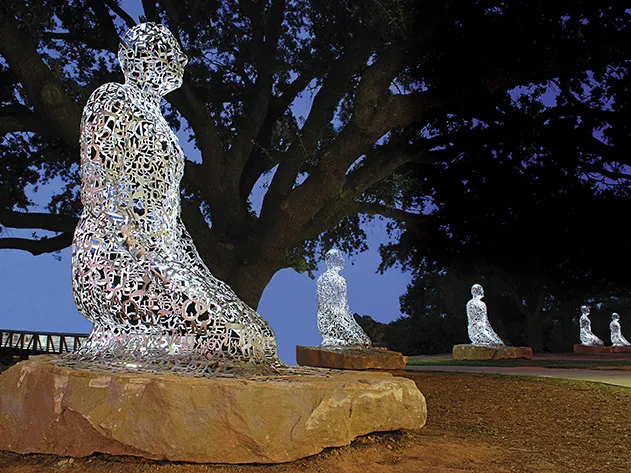
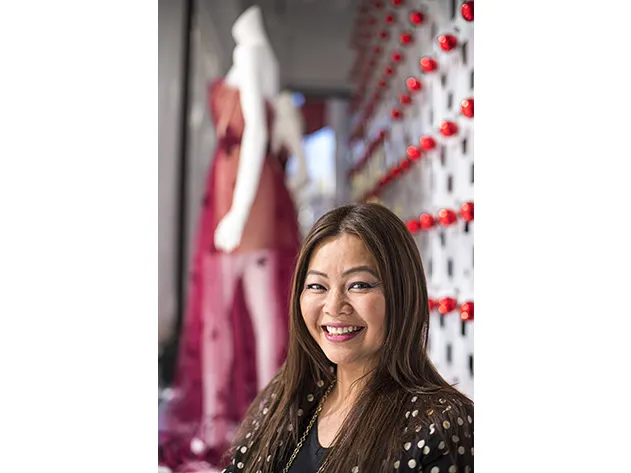
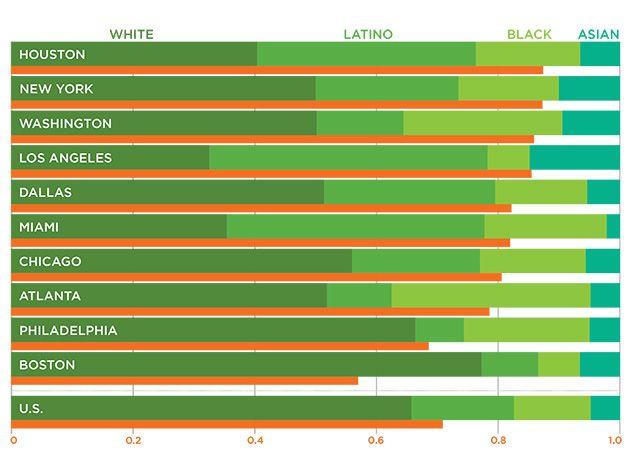
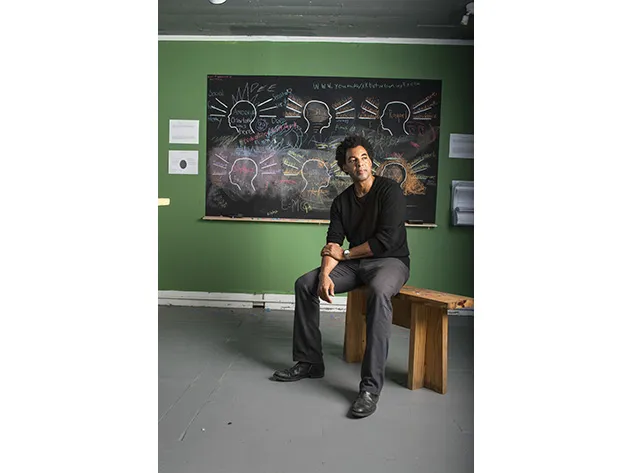
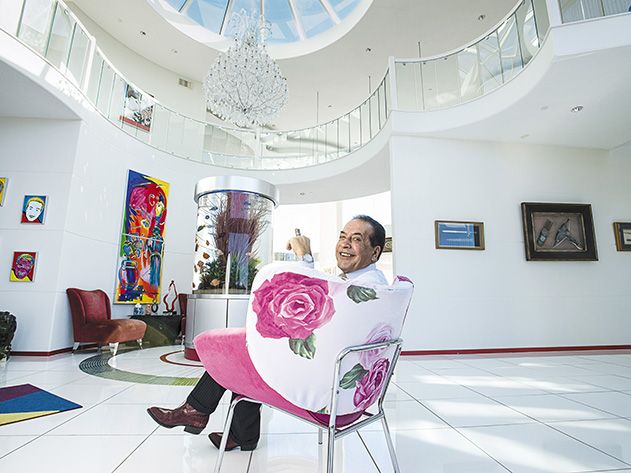
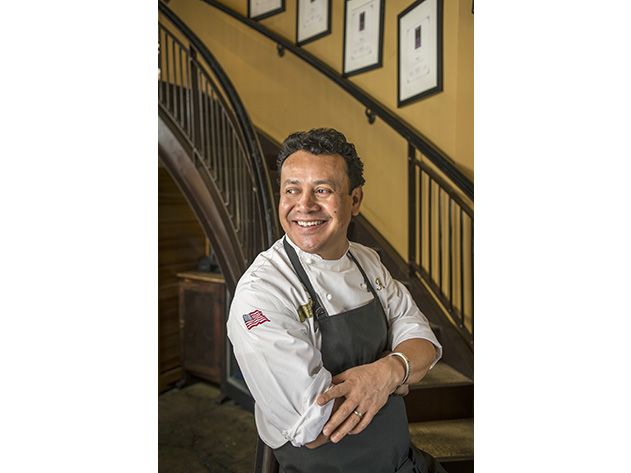
/https://tf-cmsv2-smithsonianmag-media.s3.amazonaws.com/accounts/headshot/tony.png)